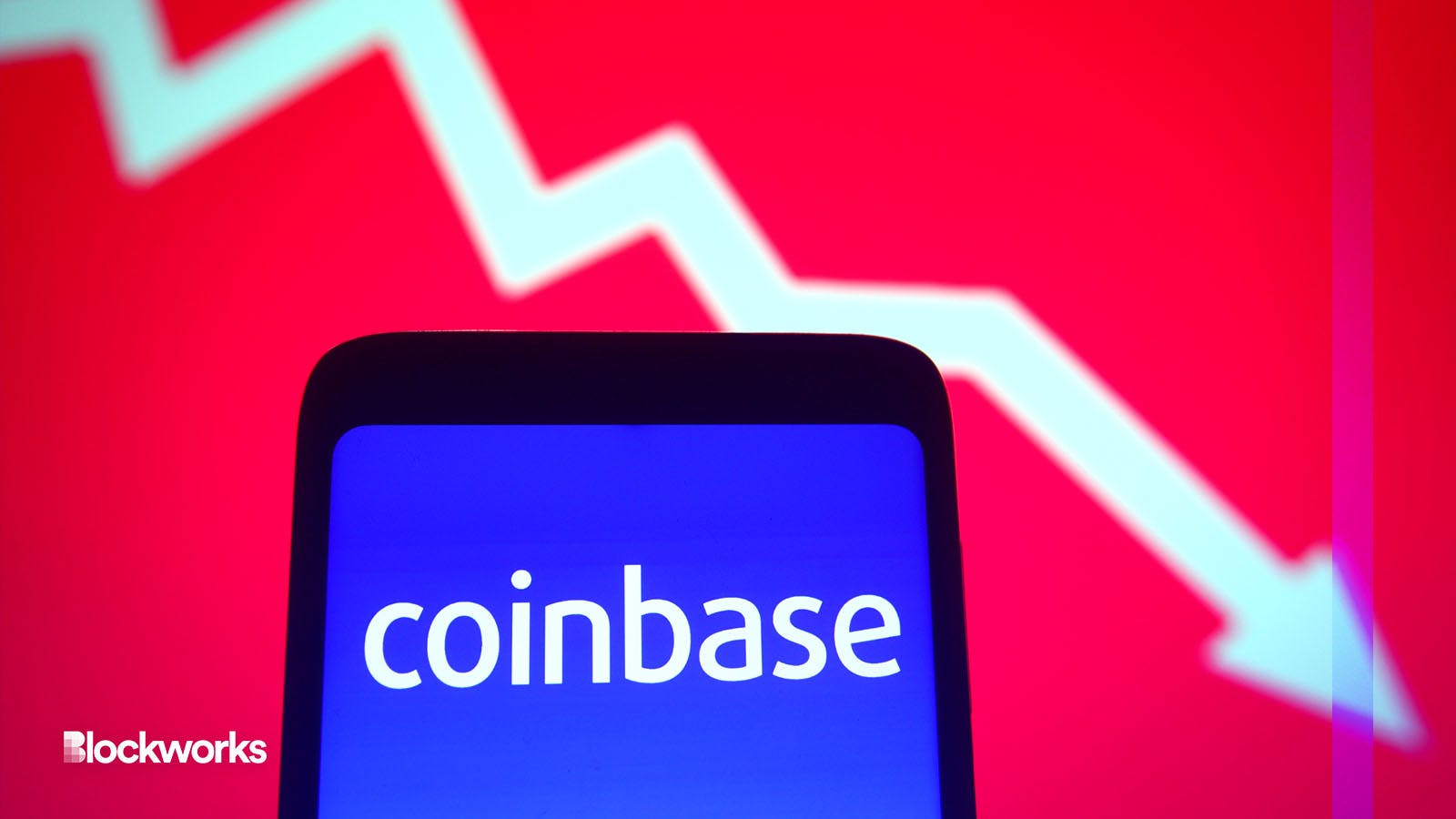Coinbase Diversified Revenue With Staking — Now Comes The SEC
Staking makes up more of Coinbase revenues than ever before, but Gary Gensler’s SEC stance is a problem

Source: Shutterstock / viewimage, modified by Blockworks
As crypto comes to terms with the SEC’s latest regulation by enforcement — suing and settling with Kraken over its staking services — its direct rival Coinbase seems destined to be adversely affected.
Coinbase has been working hard to diversify its revenue streams away from trading fees. Staking services have played a pivotal role in that endeavor.
Between the start of 2020 to the end of the third quarter of 2022, Coinbase raked in $9.46 billion from retail traders and an additional $508 million from institutions.
That represents 90% of the $11.7 billion revenue Coinbase brought in over that time, per SEC disclosures compiled and analyzed by Blockworks.
But the weight of Coinbase’s trading fee revenues has been shrinking. Trading fees made up 87% of quarterly revenues throughout 2020, on average, but only 77% in the first three quarters of last year.
In the third quarter of 2022, trading fees brought in only 62% of Coinbase’s revenue ($365.9 million out of $590.3 million).
Three business lines have made all the difference: interest, staking and subscription fees.
Coinbase keeps customer cash and cash equivalents at third-party banks, where they earn interest. It also generates interest on loans issued to both retail and institutional users.
The exchange also has a revenue sharing arrangement, which includes interest income, with Circle, the issuer of USDC. The deal sees Coinbase get an undisclosed cut when its users purchase USDC.
Interest made up 1.34% of all Coinbase revenues back in the first quarter of 2020, about $2.36 million. But for the following eight quarters, interest was responsible for less than 1% of all cash coming in.
But in the second quarter of 2022, Coinbase brought in more than $38.2 million via its interest activities — 4.72% of all revenue.
The following quarter (Coinbase’s most-recent disclosure) saw that figure explode to nearly $115.7 million; 19.6% of all revenues.
A bull market would ease Coinbase’s reliance on staking
Staking comes a close second for growth. Coinbase participates in blockchain consensus across multiple protocols by staking digital assets it has access to.
On average, associated staking rewards only brought in 0.87% of all Coinbase quarterly revenues between the start of 2020 and the end of the first quarter of 2021.
From there, staking jumped to 1.75% of quarterly revenues in the second quarter, to 6.21% the following period. By 2022’s third quarter, staking was 10.63% of Coinbase’s revenue — a 1,300 percentage point increase in two and a half years.
Coinbase has also seen healthy growth for its subscription revenue, which includes products such as Coinbase Cloud (blockchain and node services for developers), Coinbase One (which replaced Coinbase Pro) and Learning (educational portal).
Subscriptions were less than 0.5% of Coinbase’s revenue until the third quarter 2021 — they’re now 5.33%, pulling in $31.44 million a year later in 2022.
Sans the return of a frothy bull market, which would no doubt drive up transactional revenue, it’s clear that Coinbase stands to suffer if it goes the way of Kraken: sued or otherwise forced to sunset all staking products to avoid the SEC’s wrath.
It’s unclear which revenue streams could plug the gap, an uncomfortable fact of which the markets seem all too aware. Coinbase’s stock is down 15% since word of the Kraken settlement broke.
At least it can still earn interest on users’ cash.
Get the news in your inbox. Explore Blockworks newsletters:
- The Breakdown: Decoding crypto and the markets. Daily.
- 0xResearch: Alpha in your inbox. Think like an analyst.






